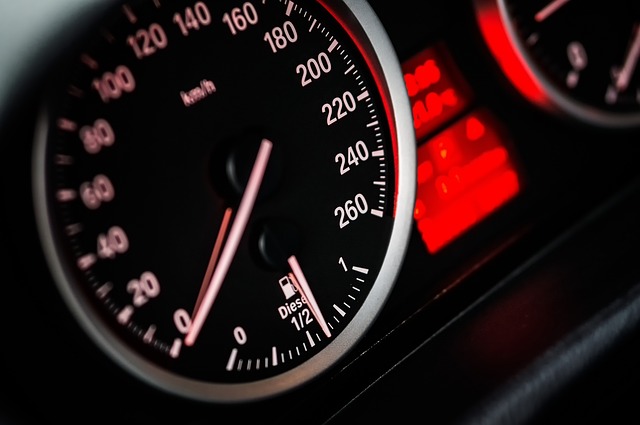How to Get Car Insurance for a Van in the UK

When it comes to owning and operating a van in the UK, one of the most important considerations is securing the right insurance policy. Whether you’re using your van for personal use, business purposes, or both, having the appropriate coverage is not only a legal requirement but also a smart financial decision. In this comprehensive guide, we’ll walk you through everything you need to know about getting car insurance for a van in the UK, from understanding the different types of policies to finding the best deals.
Why Do You Need Van Insurance?
Before diving into the specifics of how to get van insurance, it’s essential to understand why it’s necessary. Just like car insurance, van insurance is a legal requirement in the UK if you plan to drive your vehicle on public roads. Driving without insurance can lead to hefty fines, penalty points on your license, or even disqualification from driving.
Moreover, vans are often used for transporting goods, tools, or equipment, making them more vulnerable to theft or damage. A good insurance policy will protect you financially in case of accidents, theft, vandalism, or other unforeseen circumstances.
Types of Van Insurance Policies
There are several types of van insurance policies available in the UK, each catering to different needs and budgets. Here’s a breakdown of the most common options:
1. Third-Party Only (TPO)
This is the most basic level of van insurance and is often the cheapest option. It covers damages or injuries you cause to others while driving your van but does not cover any damage to your own vehicle. This type of policy is suitable for those on a tight budget, but it may leave you exposed to significant out-of-pocket costs if your van is damaged or stolen.
2. Third-Party, Fire, and Theft (TPFT)
This policy offers slightly more coverage than TPO. In addition to covering damages or injuries to third parties, it also provides protection against fire damage and theft. If your van is stolen or catches fire, your insurer will cover the cost of repairs or replacement. However, it still won’t cover accidental damage to your van.
3. Comprehensive Insurance
Comprehensive insurance is the most extensive and flexible option. It covers damages to your van, injuries to yourself and others, and any third-party liabilities. It also includes protection against fire, theft, and accidental damage. While this type of policy tends to be more expensive, it offers peace of mind and is ideal for those who want full coverage.
4. Courier or Delivery Van Insurance
If you use your van for courier services or deliveries, standard van insurance may not suffice. Courier or delivery van insurance is specifically designed for drivers who transport goods as part of their job. These policies often include additional features like cover for lost or damaged goods.
5. Business Van Insurance
For those who use their van primarily for work purposes, business van insurance is a must. This type of policy covers vehicles used for commercial activities, such as transporting tools, equipment, or goods. It can also include coverage for employees who drive the van on behalf of the business.
Factors That Affect Van Insurance Premiums
Several factors influence the cost of van insurance in the UK. Understanding these variables can help you make informed decisions and potentially lower your premiums:
1. Type of Van
The make, model, and age of your van play a significant role in determining your insurance premium. Newer, more expensive vans typically cost more to insure because they are more costly to repair or replace.
2. Usage
How you use your van—whether for personal, business, or courier purposes—will impact your insurance rate. For example, vans used for business purposes generally attract higher premiums due to increased risk.
3. Driving History
Your driving record is another critical factor. Drivers with clean records and no claims history are likely to receive lower premiums compared to those with past accidents or traffic violations.
4. Location
Where you live and park your van overnight can also affect your insurance costs. Urban areas with higher crime rates or traffic congestion tend to have higher premiums than rural areas.
5. Security Features
Installing security features like alarms, immobilizers, and tracking devices can reduce your insurance costs. Insurers view these measures as effective ways to deter theft and minimize risks.
Steps to Get Van Insurance in the UK
Now that you understand the basics of van insurance, let’s go over the steps to secure a policy:
1. Assess Your Needs
Determine how you plan to use your van and what type of coverage you require. Consider whether you need comprehensive insurance, business van insurance, or a specialized policy for couriers.
2. Compare Quotes
Shop around and compare quotes from multiple insurers. Use online comparison tools to find the best deals, but don’t rely solely on price. Pay attention to the terms and conditions of each policy to ensure it meets your needs.
3. Check for Discounts
Many insurers offer discounts for things like installing security devices, being a member of certain organizations, or having a no-claims bonus. Be sure to inquire about any available discounts to lower your premium.
4. Provide Accurate Information
When applying for insurance, provide accurate and complete information about your van, its usage, and your driving history. Misleading information can result in your policy being invalidated.
5. Review Policy Details
Before finalizing your purchase, carefully review the policy documents. Ensure you understand the coverage limits, exclusions, and any additional fees.
6. Pay Your Premium
Once you’ve selected a policy, pay your premium either upfront or in installments, depending on your preference. Keep proof of payment and your insurance certificate handy, as you may need to present them during roadside checks.
Tips for Saving Money on Van Insurance
Insurance premiums can add up quickly, especially for high-risk drivers or those with expensive vans. Here are some tips to help you save money:
- Increase Your Excess: Opting for a higher voluntary excess can lower your premium, but make sure you can afford to pay it in the event of a claim.
- Limit Mileage: If you don’t drive your van frequently, consider limiting your annual mileage. Lower mileage reduces the likelihood of accidents, which can lead to cheaper premiums.
- Bundle Policies: If you have other vehicles or home insurance, bundling them with the same provider may qualify you for multi-policy discounts.
- Improve Security: Invest in security upgrades like CCTV cameras, locks, or GPS trackers to reduce the risk of theft and lower your premium.
- Build a No-Claims Bonus: Avoid making small claims whenever possible to build up a no-claims bonus, which can significantly reduce future premiums.



